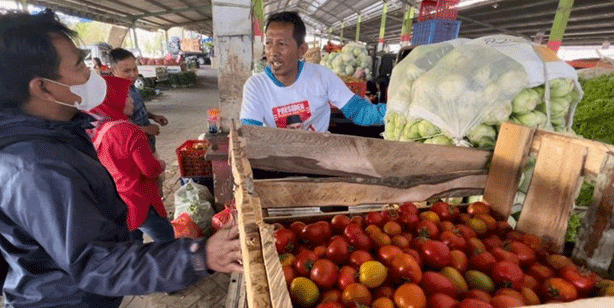The tomato farming industry in Malang, Indonesia, is currently facing a severe economic downturn, with prices falling to as low as Rp 1,500 per kilogram. For tomato farmers like Gimo, from Tawangargo Village in Karangploso, the ongoing drought coupled with overproduction has resulted in significant financial losses, with farmers losing up to 40% of their income.
A Devastating Price Drop
According to Gimo, who has been farming tomatoes for years, the current market price of Rp 1,500 per kilogram is far below the ideal price range of Rp 4,000 to Rp 5,000 per kilogram that is needed to cover production costs and generate a profit. “At these prices, it’s a loss for farmers, as the production costs far outweigh the selling price,” he said. Gimo has already experienced a difficult second harvest, where even selling his tomatoes didn’t cover his production expenses.
This is a sharp contrast to earlier in the year, when farmers were able to sell tomatoes for as much as Rp 15,000 per kilogram in April 2024. At that time, prices were high enough to provide a good income for farmers. However, this season, the excess supply of tomatoes in the market has driven prices down, with many farmers like Gimo struggling to find buyers who will pay a reasonable price.
Drought and Overproduction: A Dangerous Combination
The ongoing drought has further exacerbated the problem. Tomatoes require a consistent supply of water to remain plump and fresh, but the long dry season has left many farmers unable to water their crops adequately. As a result, tomatoes are shriveling, reducing their quality and further lowering their market value. Gimo explained, “The tomatoes have shriveled because they didn’t get enough water. We have to water them more often, but it’s difficult to get enough water during the drought.”
Compounding the issue, many farmers in the region planted tomatoes at the same time, leading to an oversupply in the market. The increased competition among farmers has pushed prices down even further. At the Karangploso Vegetable Market, one crate of tomatoes weighing nearly 10 kilograms is being sold for just Rp 30,000 to Rp 40,000, compared to the previous price of Rp 110,000 per crate.
Market Dynamics and Impact on Retail Prices
The oversupply has not only affected farmers but also impacted prices in traditional markets. Vendors, like Khamim Tohari at the Karangploso Vegetable Market, are seeing dramatically reduced profits as well. “Tomato prices are crashing right now,” said Khamim. “For a 10-kilogram crate, we’re only getting Rp 30,000 to Rp 40,000. The cost of the crate itself is Rp 15,000, so there’s almost no margin left.”
This glut of tomatoes in the market is due to low demand for tomato products, coupled with the large-scale production that many farmers undertook this season. As a result, the supply chain is overwhelmed, and both farmers and vendors are feeling the squeeze.
Looking Forward: Solutions for Tomato Farmers
To help tomato farmers like Gimo, several measures must be taken. First, government intervention is crucial in regulating market supply to avoid oversaturation. Authorities can promote diversification of crops, encourage staggered planting schedules, and introduce better market forecasting tools to help farmers make informed decisions.
Additionally, introducing water-efficient irrigation systems could help alleviate the problems caused by drought. For example, drip irrigation systems that deliver water directly to the plant’s roots could conserve water while maintaining crop quality. Implementing training programs to help farmers adopt these technologies and methods would also provide long-term benefits.
Finally, improved storage facilities and post-harvest processing can ensure that excess tomatoes are not wasted during peak harvest periods. These steps could help stabilize market prices and provide farmers with more control over their production and revenue.
The collapse of tomato prices in Malang is a critical issue that has left many farmers facing significant losses. Overproduction and drought conditions are creating unsustainable situations for growers, driving them into debt and uncertainty. To ensure a viable future for Malang’s tomato farmers, strategic measures, such as improved market regulation, water management, and storage solutions, must be put in place.











